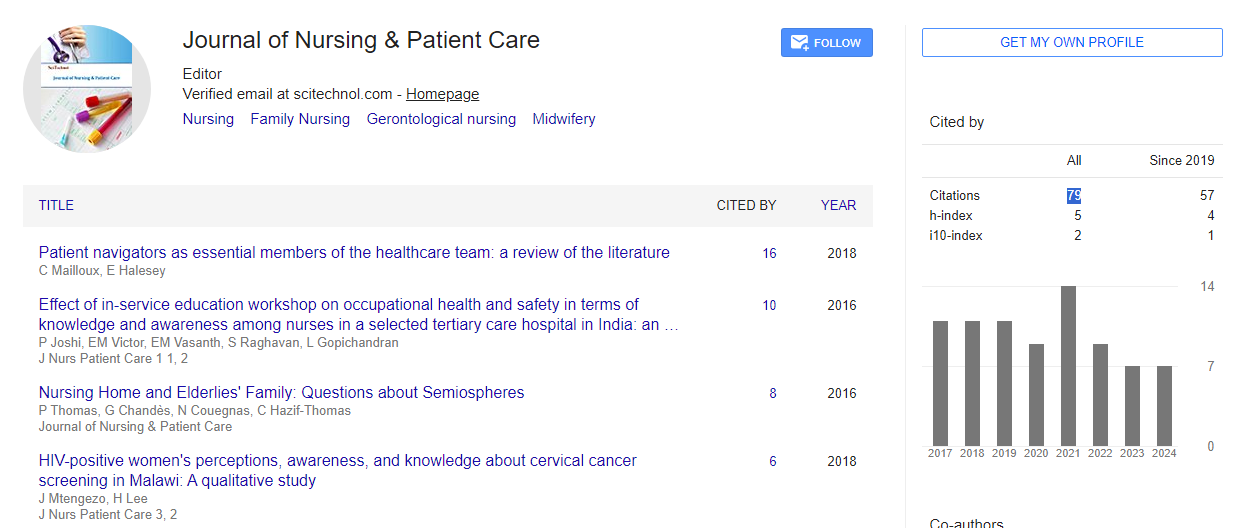Healthcare professional role in identifying and assessing victims of human trafficking
Jeanann Sousou Coppola and Renee Cantwell
Rutgers School of Nursing, USA
: J Nurs Patient Care
Abstract
Human trafficking (HT) is a global and national public health issue with many quantifying concerns. Health care providers may encounter victims of HT in a clinical setting yet not realize that these individuals are being trafficked. Subtle cries for help may go unnoticed if the health care provider is not aware of the signs and symptoms and the intent is to prepare health care professions for this public health concern. The faces of trafficked persons are as diverse as our population. Trafficking is a crime that cuts across race, nationality, gender, age, and socio-economic background. Seventy-nine percent of the victims of the US HT trade fall into the slavery category of sexually abused women; 21% of whom are under age children. Female victims are both women and girls who are taken from their environment, sometimes across borders. According to the Trafficking Victims Protection Act, individuals may be trafficking victims regardless of whether they once consented or even participated in a crime as a direct result of being trafficked. As health care professionals caring for these victims of HT, it is important to be sensitive to the situation and not jump to any conclusions. More importantly, it is important for the health care professional to be aware of the signs and symptoms of Human Trafficking and to know their role.
 Spanish
Spanish  Chinese
Chinese  Russian
Russian  German
German  French
French  Japanese
Japanese  Portuguese
Portuguese  Hindi
Hindi 